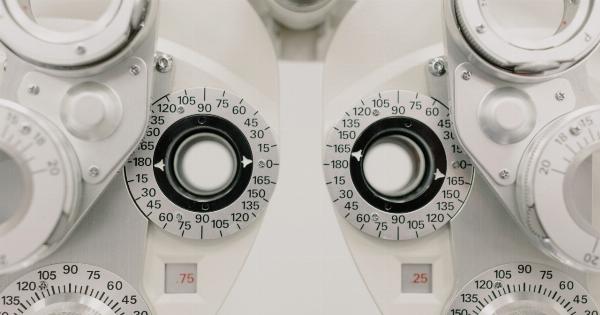Eyes are an important part of the human body, and it is essential to maintain their health. With increasing age, the risk of developing eye conditions and illnesses also increases.
One of the most common of these is glaucoma, which affects millions of people worldwide. Glaucoma is a term used to describe a wide range of eye conditions that cause damage to the optic nerve. It may lead to permanent vision loss if left untreated. In this article, we will discuss glaucoma, its types, causes, symptoms, and treatment.
What is Glaucoma?
Glaucoma is a group of eye diseases that damage the optic nerve. The optic nerve is responsible for carrying the information from the eyes to the brain. In glaucoma, the damage to the optic nerve occurs due to increased pressure within the eye.
This can lead to vision loss or blindness if left untreated. Glaucoma is one of the leading causes of blindness worldwide, especially in people over 60 years.
Types of Glaucoma
There are several types of glaucoma:.
Open-angle Glaucoma
This is the most common type of glaucoma. It occurs when the drainage canals in the eye become clogged, leading to a gradual increase in eye pressure. As the pressure increases, it damages the optic nerve and leads to vision loss.
Open-angle glaucoma does not have any early symptoms and can progress slowly over a long period, making it difficult to detect.
Angle-closure Glaucoma
This type of glaucoma occurs when the iris (the colored part of the eye) is physically blocking the eye’s drainage system. This leads to a sudden increase in eye pressure, causing severe eye pain, nausea, vomiting, and blurred vision.
This condition is a medical emergency and requires immediate treatment.
Pigmentary Glaucoma
This type of glaucoma occurs when pigment from the iris clogs the drainage system, resulting in increased eye pressure.
Secondary Glaucoma
Secondary glaucoma happens when another eye condition, such as an eye injury or inflammation, causes increased eye pressure leading to optic nerve damage.
Congenital Glaucoma
Congenital glaucoma is a rare type that develops in infants or young children. It happens when the drainage system in the eye is underdeveloped, leading to increased eye pressure and optic nerve damage.
Causes of Glaucoma
The exact cause of glaucoma is unknown in most cases. However, it is believed that several factors can contribute to its development, including:.
- Increased pressure within the eye
- Family history of glaucoma
- Age (risk increases after age 60)
- Thin corneas
- Diabetes and high blood pressure
- Eye injury or surgery
- Long-term use of corticosteroids
Symptoms of Glaucoma
Most types of glaucoma have no early symptoms, and as a result, many people with the disease may not know they have it until it is too late. However, some symptoms may be present, depending on the type of glaucoma, and they include:.
- Gradual loss of peripheral (side) vision
- Tunnel vision (loss of central vision)
- Eye pain
- Redness in the eye
- Nausea or vomiting
- Halos around lights
- Blurred vision
- Eye itching
- Headache
Diagnosis of Glaucoma
Diagnosing glaucoma involves several tests, including:.
- Eye exam
- Tonometry (measuring eye pressure)
- Pachymetry (measuring corneal thickness)
- Gonioscopy (examining the drainage angle of the eye)
- Optic nerve examination
Treatment of Glaucoma
Glaucoma is a chronic condition that requires lifelong management. The treatment options for glaucoma usually include:.
- Eye drops: The most common treatment for glaucoma is eye drops that reduce eye pressure. There are several types of eye drops available, including prostaglandin analogs, beta-blockers, alpha-adrenergic agonists, and carbonic anhydrase inhibitors.
- Oral medications: In some cases, oral medications may be prescribed to lower eye pressure. These medications include carbonic anhydrase inhibitors and beta-blockers.
- Laser surgery: Laser surgery may be performed to open the blocked drainage canals, allowing the fluid to drain properly and reducing eye pressure. There are several types of laser surgery, including trabeculoplasty and iridotomy.
- Conventional surgery: If other treatments fail, a surgical procedure may be recommended to create a new drainage channel to lower eye pressure. This procedure is called trabeculectomy.
Other Eye Disorders
Aside from glaucoma, there are several other eye disorders that may affect vision and require treatment. These include:.
Cataracts
Cataracts are a clouding of the eye’s natural lens. This can cause blurred vision, reduced color perception, and difficulty seeing at night.
Cataracts are usually treated with surgery to remove the affected lens and replace it with an artificial one.
Dry Eye Syndrome
Dry eye syndrome is a condition where the eyes do not produce enough tears or the tears evaporate too quickly, causing discomfort, redness, and itching.
Treatment usually involves using artificial tears or lubricating eye drops and, in severe cases, oral medications.
Macular Degeneration
Macular degeneration is a condition that affects the macula, the part of the retina responsible for central vision. It results in blurred or distorted vision, and in severe cases, blindness.
Treatment options include medication injections and laser surgery.
Conclusion
Eyes are essential organs of the body, and it is crucial to maintain their health. Glaucoma is a common eye disorder that can lead to permanent vision loss if left untreated. It is important to visit an eye doctor regularly for checkups and screenings.
Other eye disorders like cataracts, dry eye syndrome, and macular degeneration can also affect vision and require treatment. Early detection and treatment can help preserve vision and prevent blindness.


























